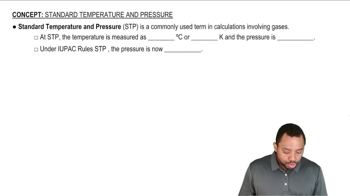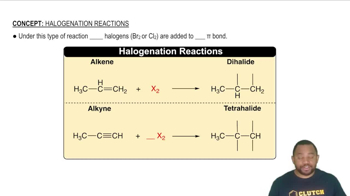Here are the essential concepts you must grasp in order to answer the question correctly.
Critical Temperature and Pressure
Critical temperature is the highest temperature at which a substance can exist as a liquid, while critical pressure is the minimum pressure required to maintain that liquid state at the critical temperature. Above these values, the substance becomes a supercritical fluid, exhibiting unique properties. Understanding these concepts is essential for predicting phase behavior in substances like halogenated methanes.
Recommended video:
Standard Temperature and Pressure
Trends in Halogenated Methanes
Halogenated methanes, such as CCl4, exhibit trends in their critical properties based on molecular structure and intermolecular forces. Generally, as the size and number of halogen atoms increase, the critical temperature and pressure also tend to increase due to stronger van der Waals forces. Recognizing these trends allows for informed predictions about the critical properties of similar compounds.
Recommended video:
Experimental vs. Theoretical Values
Discrepancies between experimentally determined and predicted critical temperatures and pressures can arise from various factors, including measurement errors, purity of the sample, and the limitations of theoretical models. Understanding these potential sources of error is crucial when comparing predicted values with literature data, as it helps in assessing the reliability of the predictions made.
Recommended video:
 Verified step by step guidance
Verified step by step guidance


